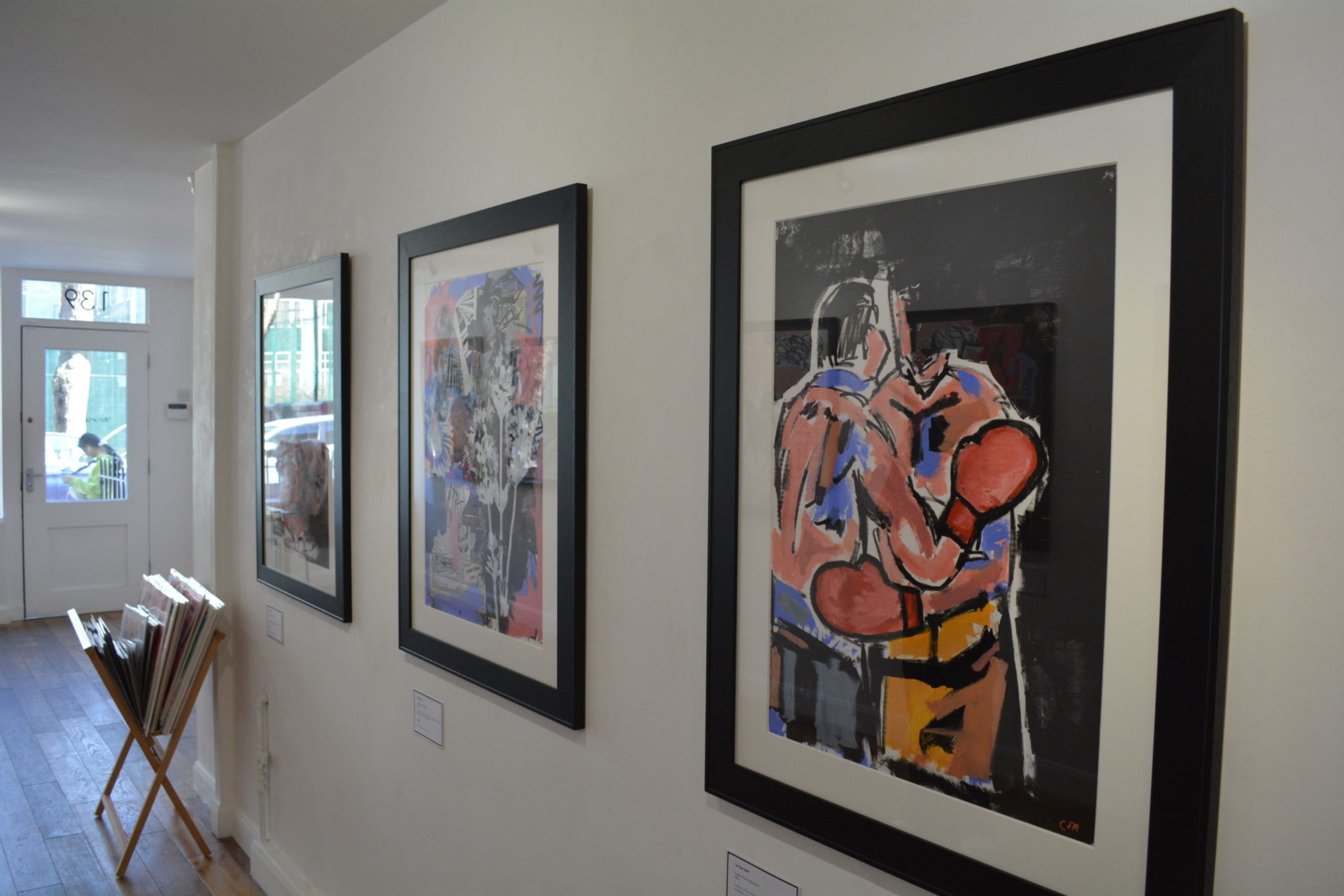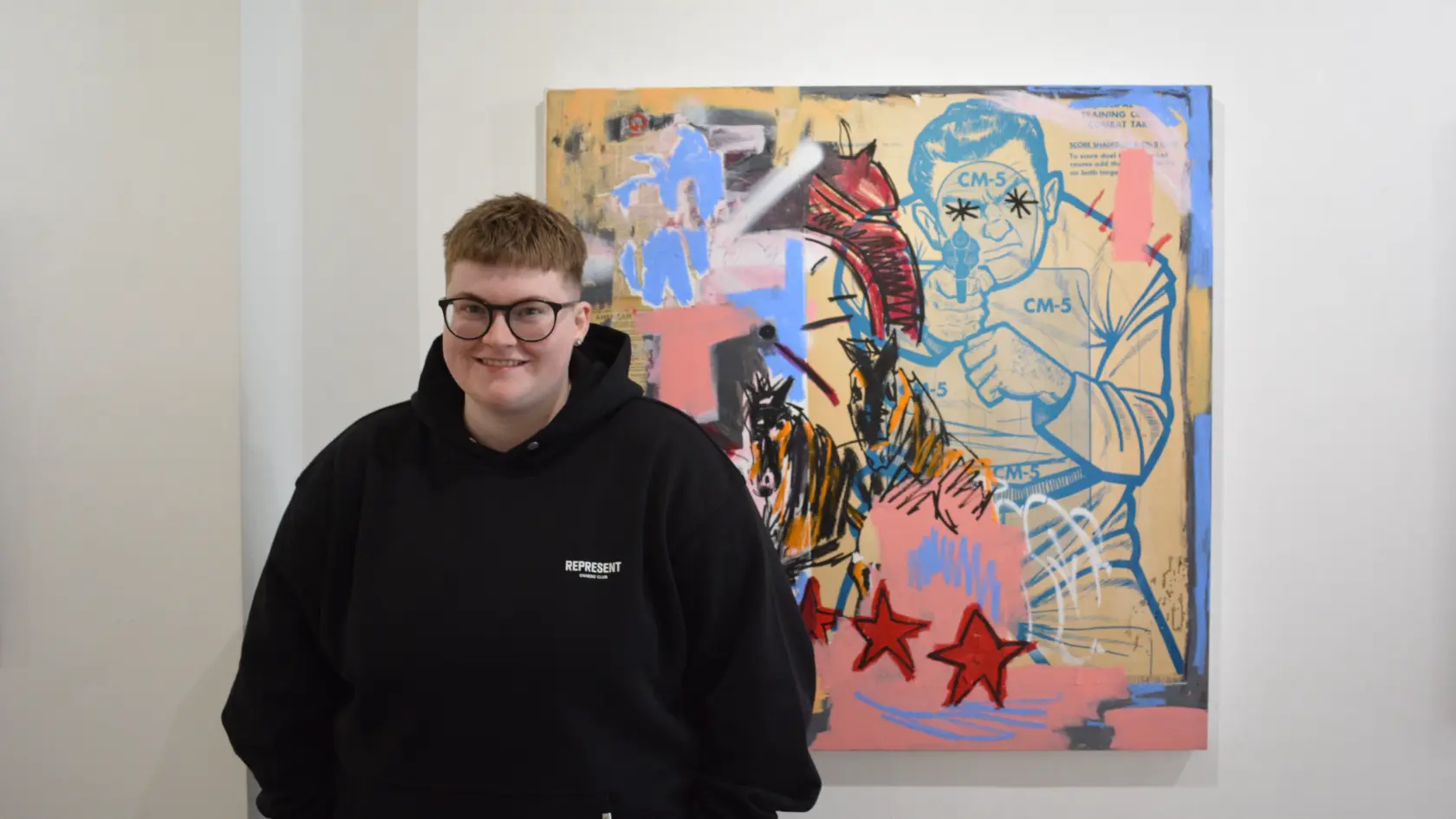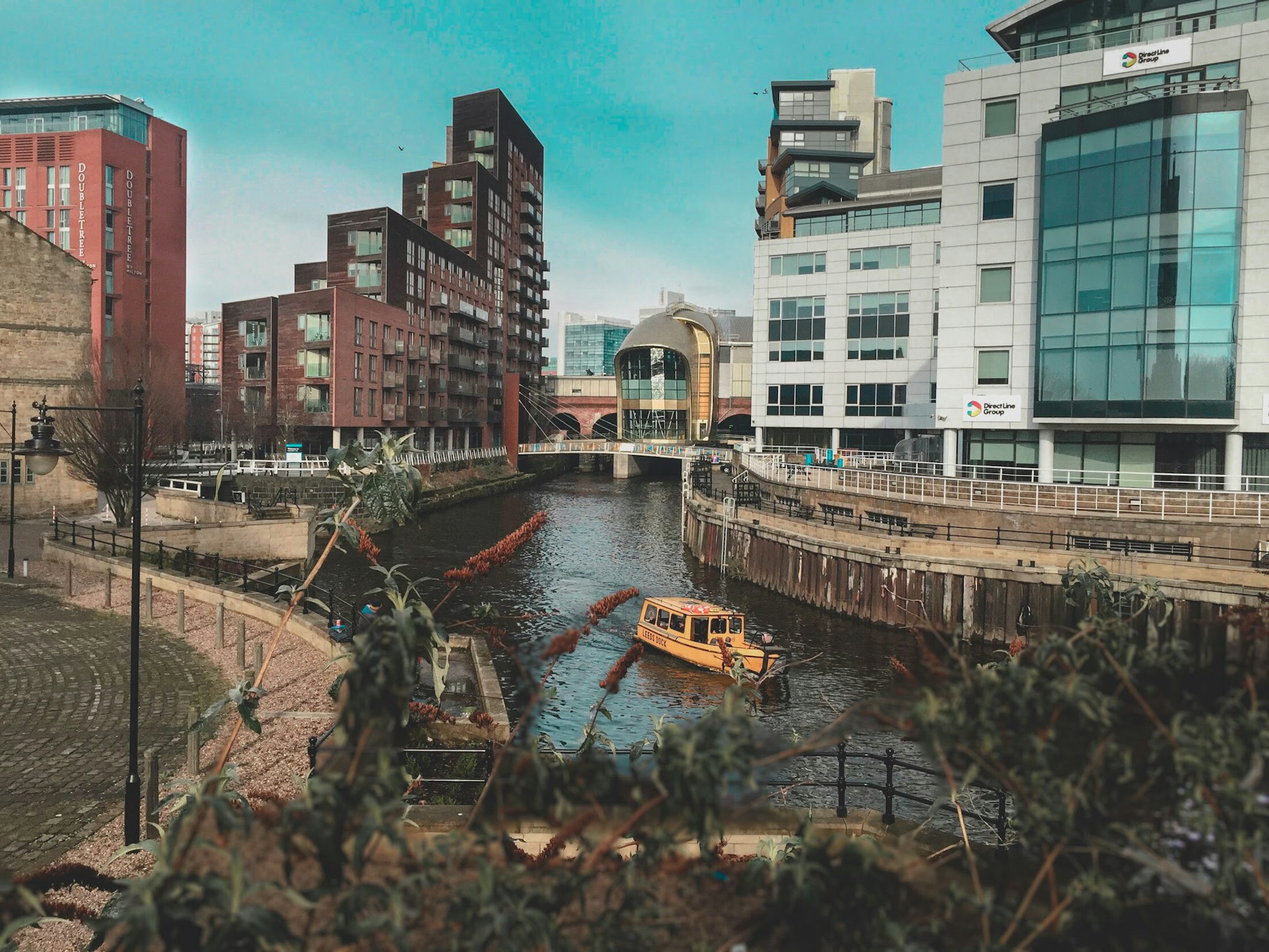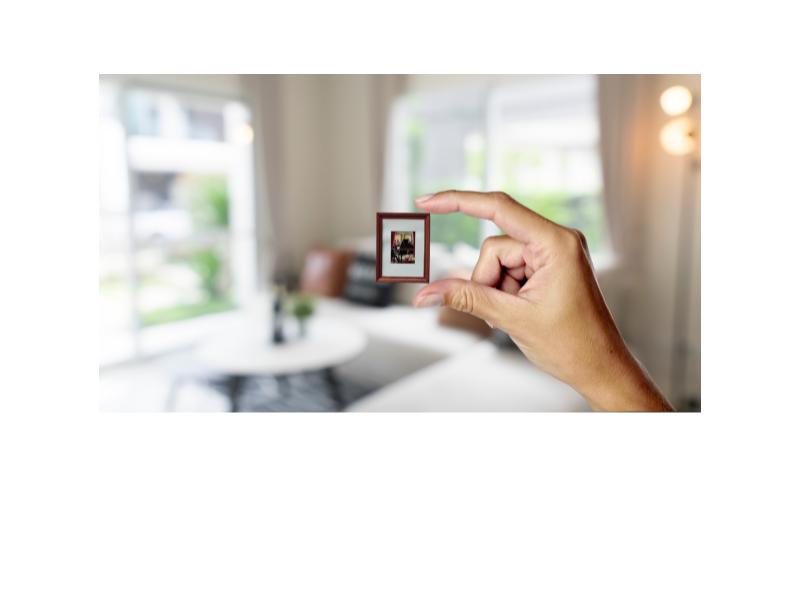By Zoë Goetzmann
Interview with Caitlin Flood Molyneux – Pop Art
This week on Cosimo Studio Tours, we are incredibly excited to present a special podcast episode and interview with artist Caitlin Flood-Molyneux (@floodmolyneuxart) which we recorded after the artist’s first solo show in London, Suspended in Time (April 3 – April 9) at Fitzrovia Gallery.
In this interview, we speak about Caitlin’s ‘Artist Story,’ the artist’s process, the curation of the show, Pop Art and DADA inspirations as well as the healing power of art.
Caitlin was included in our list of “Highly Commended Artists” for the Cosimo Art Competition in 2022. The artist is a contemporary Welsh Artist residing in South Wales. Their practice delves into the relationship between pop culture imagery, memory, and nostalgia. Through Caitlin’s work, it is important to the artist that audiences develop their own subjective opinions: forming their own symbiotic relationships with the artwork. In this way, audiences establish a sense of personal self-reflection: reconciling with past trauma and hardships.
Caitlin Flood-Molyneux holds a Bachelor’s of Fine Arts Degree from Cardiff Metropolitan University (also Bergen Academy of Art and Design). The artist also holds a Master’s Degree in Fine Art from Cardiff Metropolitan University. Flood-Molyneux has exhibited in group exhibitions in the United Kingdom, the United States, Hong Kong, and Japan.

Zoe: So, we’re sitting in Fitzrovia Gallery after the launch of your first solo show in London. Congratulations! It’s such a lovely show, and we’re sitting with all your works as well. Thank you so much for taking the time to speak with me.
Caitlin: Thank you for inviting me!
Zoe: You’ve been a great support with Cosimo – we’ve loved showing your work and everything. And we had your work also in the highly commended list of artists for our competition last year.
Caitlin: Which was fantastic, and I was really honored to be featured on that. So thank you as well!
Zoe: So, there are going to be some questions about the show from last night… but we’re interested also in your artist’s story. So can you kind of delve into what your artist’s story is? Tell me about that journey.
Caitlin: So my story is, when I was younger, I always painted. My mum was always encouraging me to paint as a young child, and I hated school. It was really hard for me to even be in school; I just hated it. And she saw something in me and she loved art herself.
And she said, “You know, go to art college.” She pushed me; she was like, “Go to college.” And that’s where things really kicked off. I started to delve deep into graphic design and then exploring printmaking and screen printing.
I carried on to do a foundation degree in art and design, which I really enjoyed. And I then went on to do an artist designed to make a course. But it was so, it was more products and making tables, stuff like that, and ceramics.
And at the time, I thought maybe it would be more of a job opportunity-wise; it would be a better course. But then in my second year, I figured out that, no, I want to be a fine artist.
I was very ambitious when I was in my foundation degree, making these really large, abstract pieces. And then I went into my second year and went to Norway for Erasmus.
And I did my second year out in Norway, where I then expressed myself through more collage-based work. I met artist Dexter Dalwood, who was just really inspiring.
And he gave me the confidence then to say, “No, just do what you want to do, paint what you want to paint.” And then I went back into my third year, then did my masters, and yeah, here I am!
Zoe: Yeah, there’s so much travel as well, but always the best and always good influences. That makes sense. What kind of work did your mum do when she was doing art?
Caitlin: Very bright, abstract work, very landscape-based. So, I was very landscape-based when I first started painting. And she used a lot of textiles in her work and collage.
So I think that’s where that influence came from. And that’s where I learned how to use all the different materials. She was actually a staff nurse.
She didn’t carry on doing a fine art degree, and she went back to it years later but then had to stop again. But she was always a nurse. So it was nice then because she was teaching me all these techniques.
That’s where I really learned how to paint, especially use oil paints.
She taught me how to do that. And I had no clue. So she was teaching me how to mix paints.
And she was like, “Don’t use the whole tube! And, you know, you only need to use a little bit.”
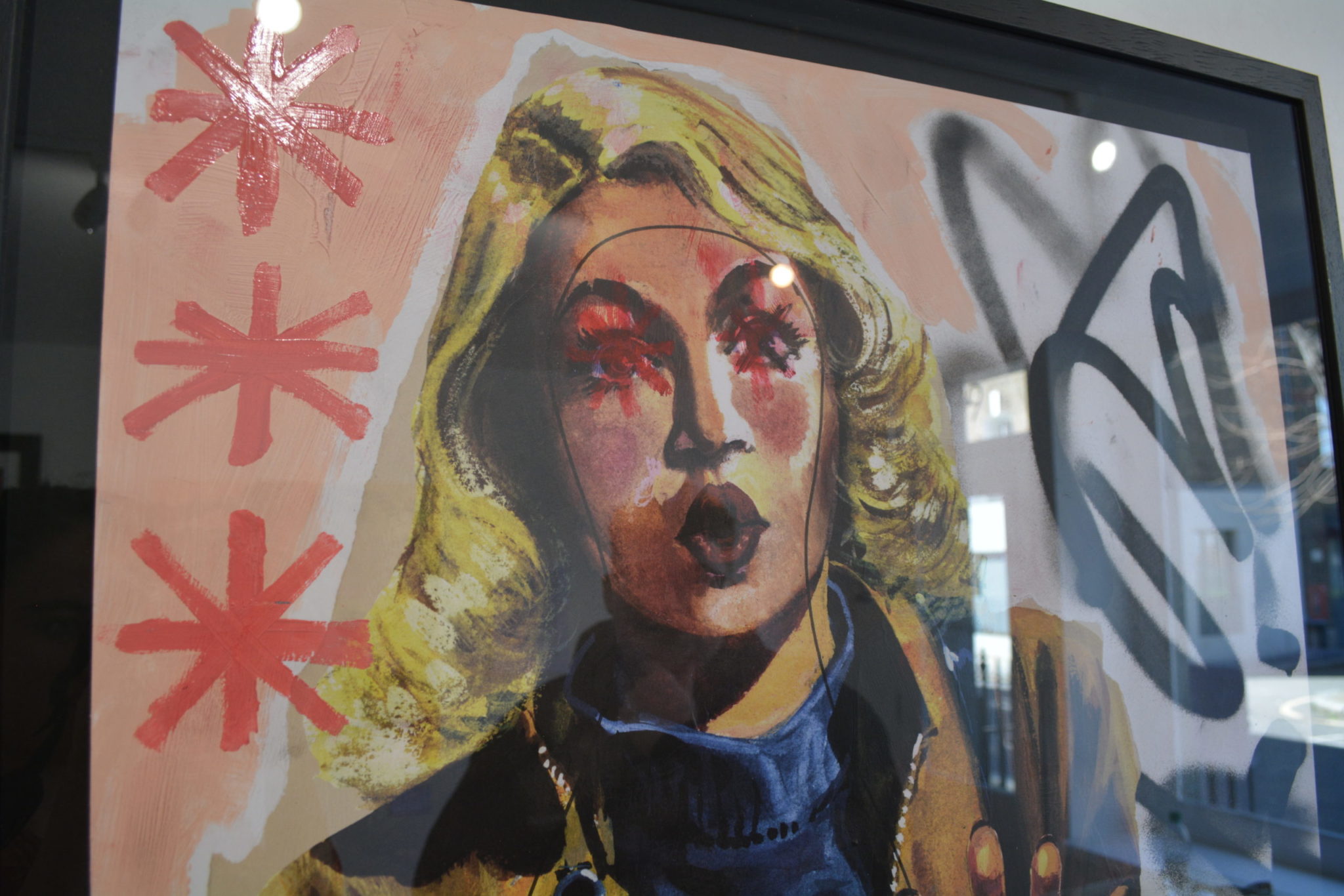
Zoe: So, she was your beginning… The idea of time is especially interesting, particularly in the context of the pandemic. Did the past three or four years have an effect on the title? With everyone talking about the concept of time and identifying this as a topic?
Caitlin: It definitely seeped in. But my stuff was going on before the pandemic. When the pandemic hit, it was more like, “Right, I’m going to make work that I enjoy doing because I’m stuck at home, and I can’t get to the studio.” I lost my studio at the time.
So I was painting in my garden. I was making work then that I wanted to just make, instead of just making work to sell or show. So I definitely think that impacted things because it made me look more into myself and my work.
What do I want to get from painting? Why do I paint? I definitely think maybe that time element was kind of pointing back at me where I was thinking, “Time isn’t what it seems, and what do I want to do with my life? And what do I want to do with my art?”
And I definitely knew I wanted to be an artist, so the pandemic kind of helped me to focus on my work. I wasn’t showing work; everything was online.
So it was based on me having a real kind of talk with myself.
Zoe: That’s great. You mentioned you want to create, which is a very important thing. I fully support artists selling because you need to make money – but you’ve got to identify that passion because that’s why you make art. It comes from this passionate place, you know?
Caitlin: Yeah, definitely. In the pandemic, I actually sold a lot of pieces because I was just exploring making paper works. And I was selling those and people enjoyed it.
And it was refreshing because I didn’t really have the space to paint massively.
Zoe: So, with the show, because we’re studying your work, can you talk to me about the curation and how you put everything together?
Caitlin: So I got a studio in an industrial unit where they’re so supportive, and I kind of turned up to this big storage unit, and I said, “Look, can I paint here?” And they were like, “Yeah, that’s great.” And they let me.
I’ve got this big container where I work in, and they let me take work out. And I have people come to visit, and they let me kind of spread out all over this giant unit. And it’s great. It contrasts well with the work.
So I was kind of spreading things out before where I was thinking, “How do I want the show to look?” And then it was a different ballgame when I got into the show and got into the space.
Yeah, I just kind of set out things first and thought, “Right, I don’t want to overcrowd, but I don’t want things to look too blank.” And obviously, I’ve got a lot of work.
And I wanted to have the frames contrasting with the canvas pieces so that things were kind of contrasting with that.
But yeah, I kind of just looked at colors and what went well, what was contrasting well. I think that’s something I do in my work anyway – I kind of look at contrasts and what kind of goes well or things that blend well.
So it kind of came naturally to me. Putting it all together now, I’ve only ever done a show for small areas, but this was a completely different ballgame.
But it was quite natural how it all came together, which was really nice.
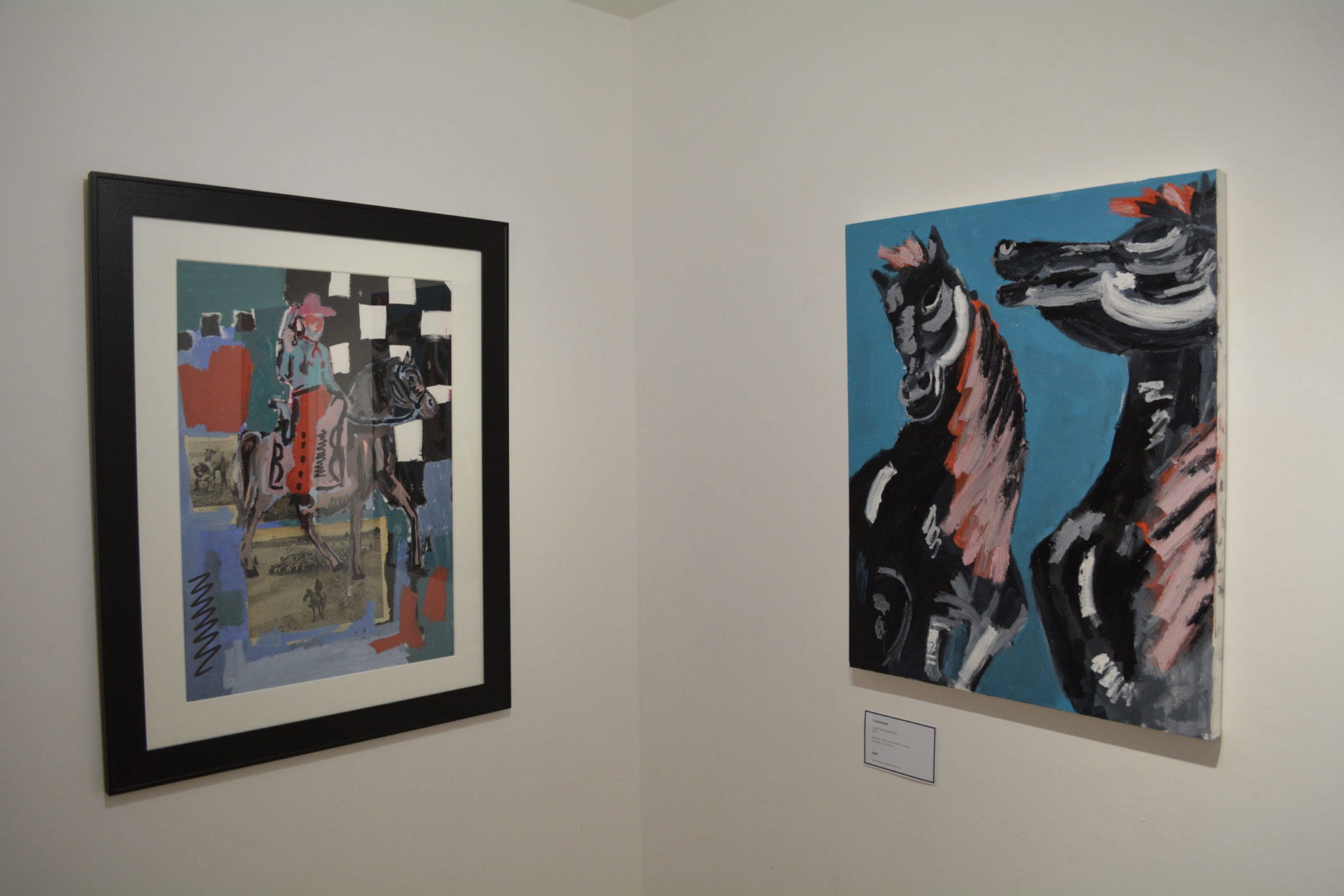
Zoe: And you got it how you wanted it to look, so because it’s your own work that you’re putting together in the show, I’m always curious when you’re working on a piece and you want to exhibit it, does that ever enter your mind? Like, how is this going to look in the gallery space… Do you ever think about it?
Caitlin: Do you know what? It’s weird because I used to think like that, where I’d be thinking, “Right, what’s this going to look like? Is a gallery going to like it?”
And now I just think about the painting. Whenever I’m making work, it’s never planned out. It’s all in the subconscious – things come out. I let things come naturally.
Zoe: Did you have any influences growing up in art school, like artistic influences that you looked towards? I don’t want to compare you to any pop artists or any of the people that are, you know, the movements that were conducted, but did you have any specific ones that you were inspired by?
Caitlin: It’s funny because I wasn’t really into pop art that much. I mean, I liked it, but it wasn’t something I wanted to recreate.
So, it’s quite funny when people say about pop art because people always think of pop art when they think of screen printing and stuff like that.
But for me, when I was growing up, it was sort of Gillian Ayrs, where she’s just a big abstract painter, and she would make these really big works, but more her attitude towards paint in this kind of, “I don’t care, I’m just going to paint what I want to paint.”
And those influences because I still think that abstract presence is there… Peter Lanyon who was, you know, doing aerial views of St. Ives.
But it’s funny because all these influences were just abstract people, okay? But I think it’s one of those things where I was influenced by those people, but I can definitely see sort of presence of that abstract mess in my work.
I mean, if you took away the figures or even just broke down the figures, it would be purely abstract. It’s just recently that I’ve started to play with figures and people, but there are still very big, heavily abstract influences in the work.
Zoe: Yeah, definitely. And what made you gravitate toward the collage aspect of your work?
Caitlin: I always really enjoyed collage when I was a kid. And I was always using the Argos catalogs and making collages and stuff like that.
And I just always really loved it. And it’s something that I would do with my mum. And yeah, I just always did, especially in graphic design, we learned more about collage and the Dada movement, and you know, how people used the color orange to express themselves.
So kind of using all that was something that I was really inspired by. And yeah, I just kind of was like, “right, I’m going to start putting all these things together.”
And what happens when all these different things align and they meet.
So that’s kind of where the work is kind of gone now where the collage is meeting the painting. And what happens if I paint from the collage and all these different elements?

Zoe: What do you love most about being an artist?
Caitlin: I just love being able to say I’m an artist and to be able to wake up and do what I love and spread that joy to other people.
My work involves doing workshops with communities and in hospitals.
So, to be able to do that and share these skills with people and give them skills that they can use to help themselves is just fantastic. And I’m really grateful every day that I wake up.
I’m grateful that I’m still doing this, and I’m still being an artist because there was a long time ago when I thought maybe I couldn’t make it. For years, I just never thought I would get to a moment where I could actually do art full-time, but now I do, which is amazing.
To hear more about Caitlin’s work, you can listen to the interview in full over on our podcast.
